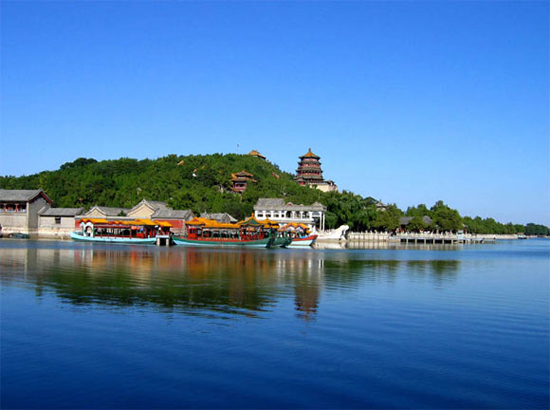Top 15 attractions in Beijing, China
- By Xu Lin
 0 Comment(s)
0 Comment(s) Print
Print E-mail China.org.cn, May 29, 2012
E-mail China.org.cn, May 29, 2012
The Summer Palace(頤和園)
|
The Summer Palace [cache30.enet.com.cn] |
The Summer Palace lies in the northwestern outskirts of Beijing, about 5 kilometers (3.11 miles) northwest of Beijing University. Occupying an area of 290 hectares, the park consists mainly of a hill, called Longevity Hill and a lake, Kunming Lake, with halls, towers, galleries, pavilions, bridges and islands dotted all over the land, hill and lake. Blending southern China-style garden architecture with northern China's natural landscapes, the gardens are probably the best of their kind in Chinese garden architecture.
In December 1998, UNESCO included the Summer Palace on its World Heritage List. It declared the Summer Palace an "outstanding expression of the creative art of Chinese Landscape Garden Design, incorporating the works of humankind and nature in a harmonious whole."
The Summer Palace began as the Garden of Clear Ripples in 1750. Artisans reproduced the Garden Architecture styles of various palaces in China. The palace complex suffered two major attacks - during the Anglo-French allied invasion of 1860, and during the Boxer Rebellion, in an attack by the eight allied powers in 1900. The garden survived and was rebuilt in 1886 and 1902. In 1888, it was given its current name. It served as a summer resort for the Empress Dowager Cixi, who diverted 30 million taels of silver, said to be originally designated for the Chinese navy, into the reconstruction and enlargement of the Summer Palace.
Admission: 30 yuan (US$4.73)/person (summer);
20 yuan (US$3.15)/person (winter)






 Add your comments...
Add your comments...

